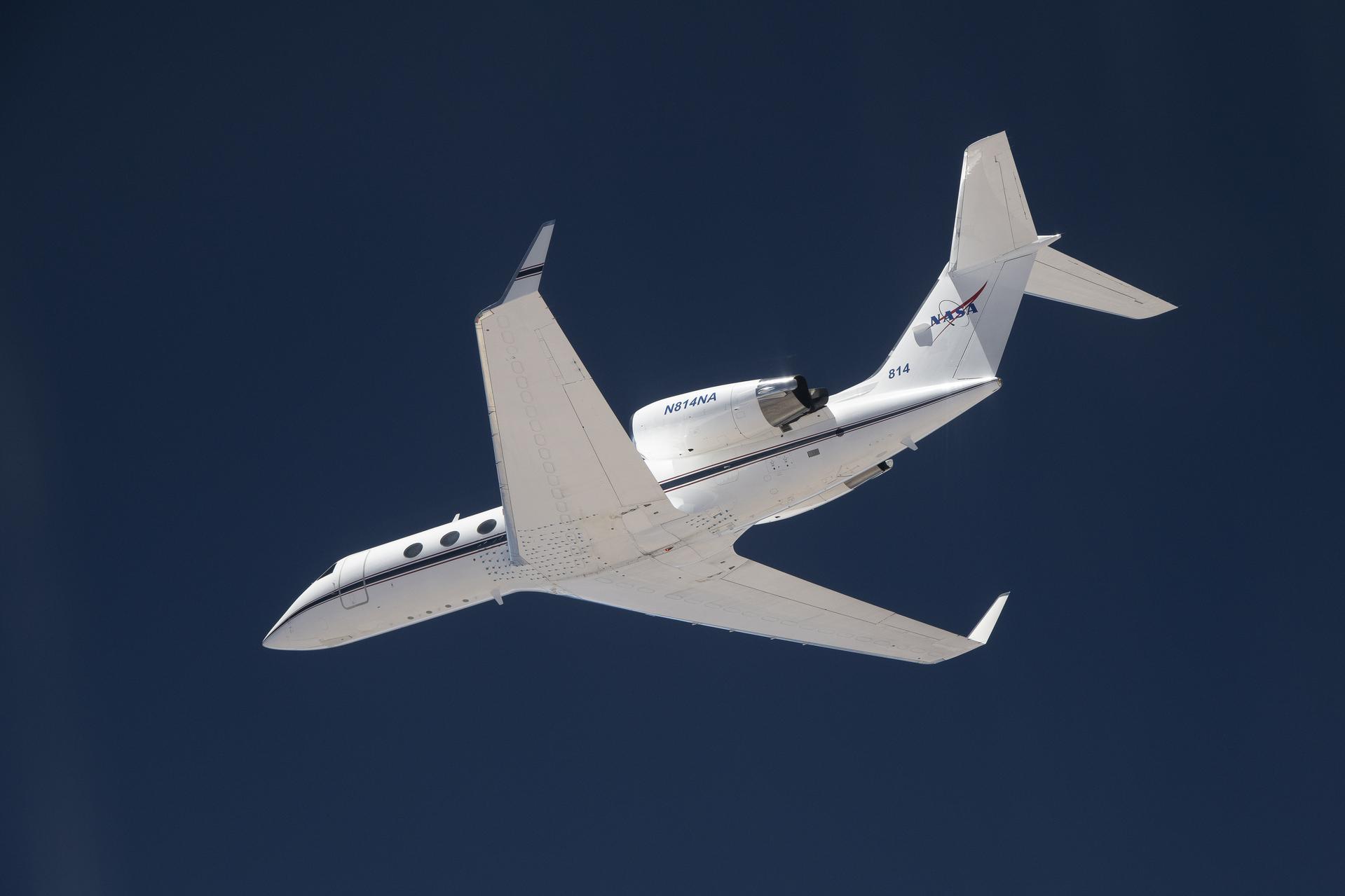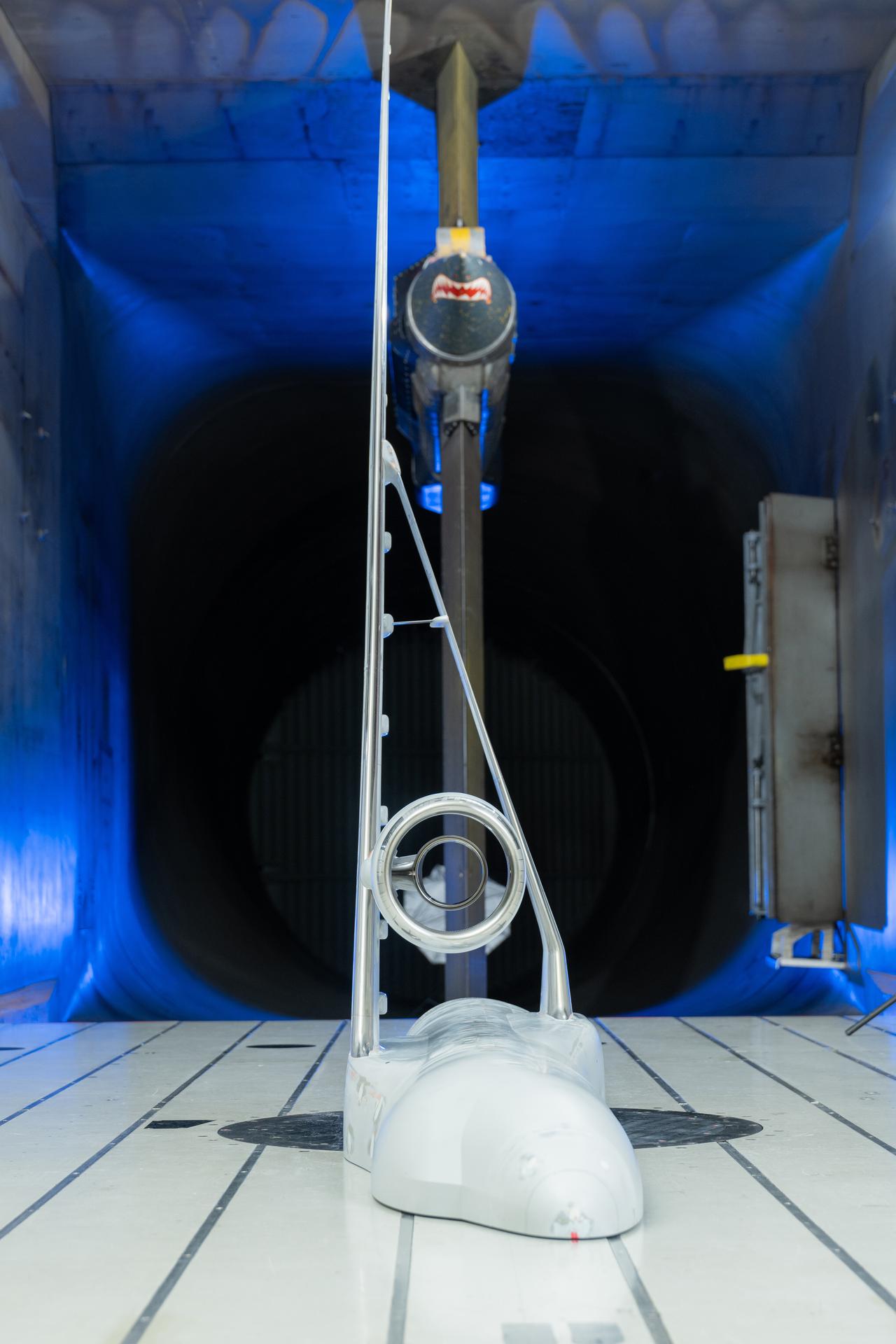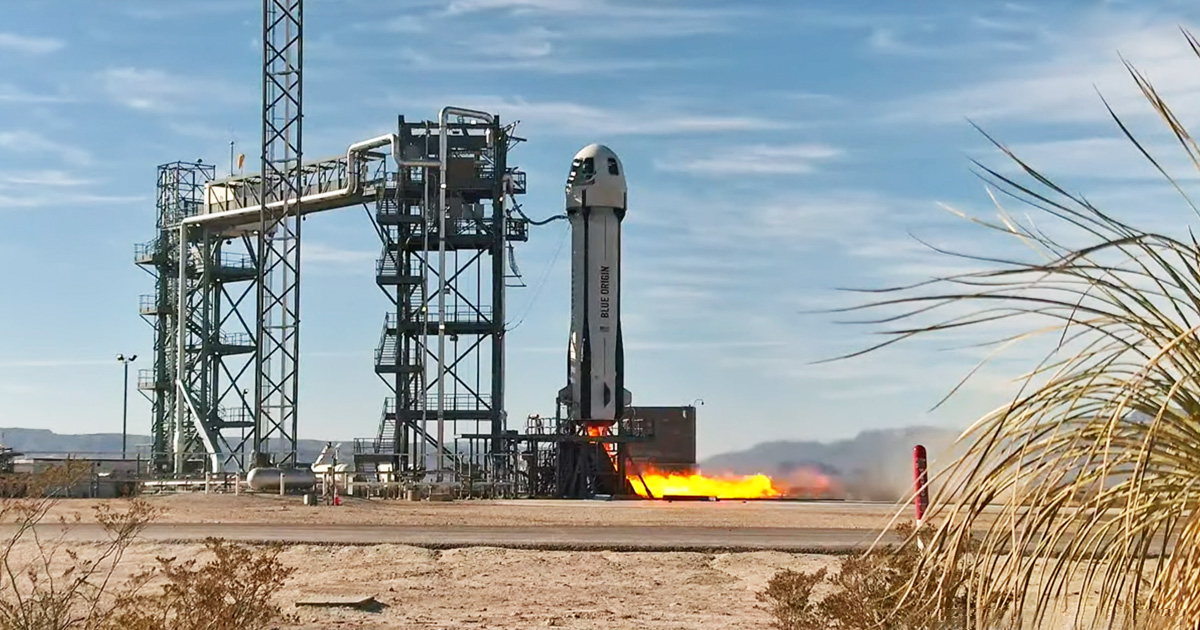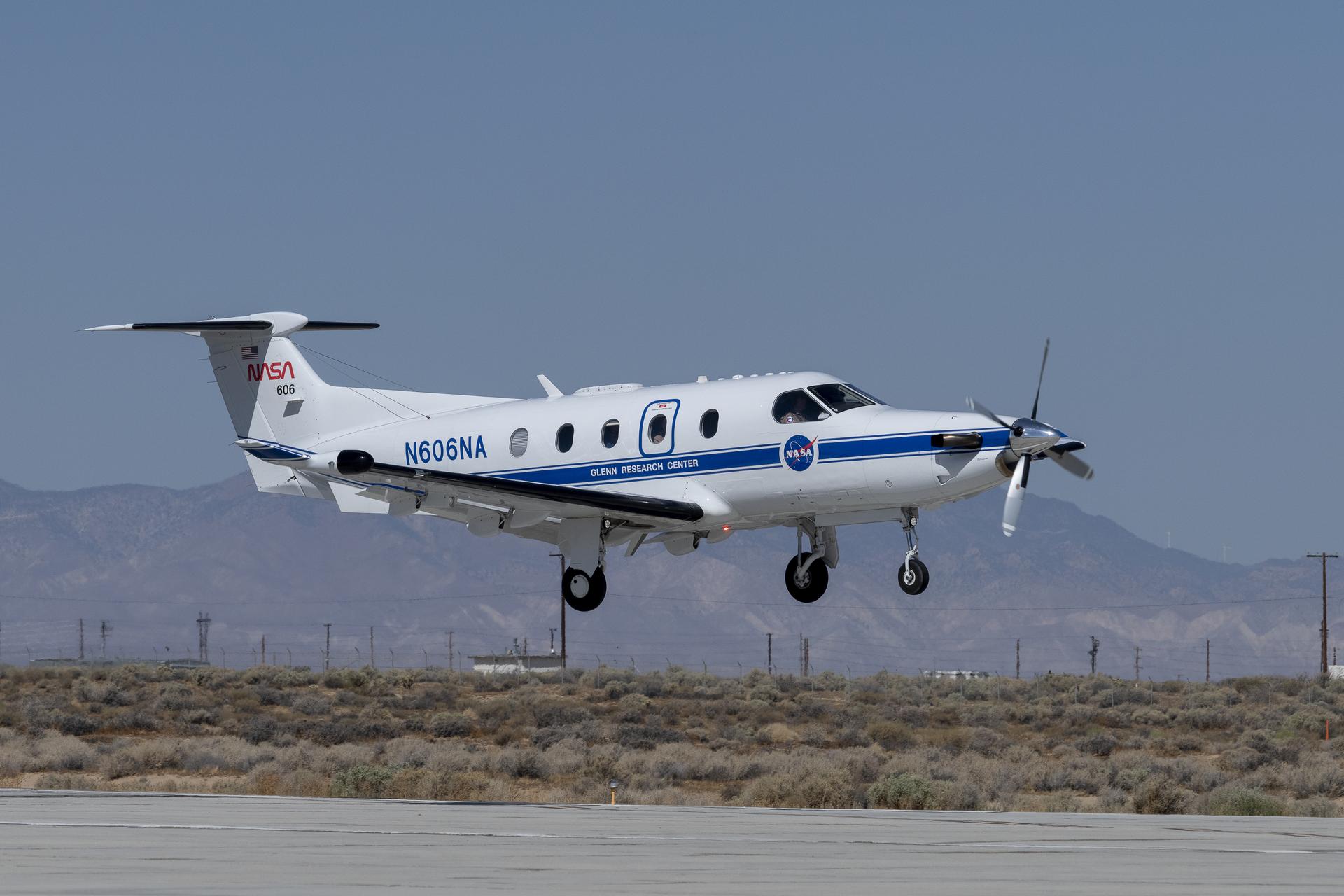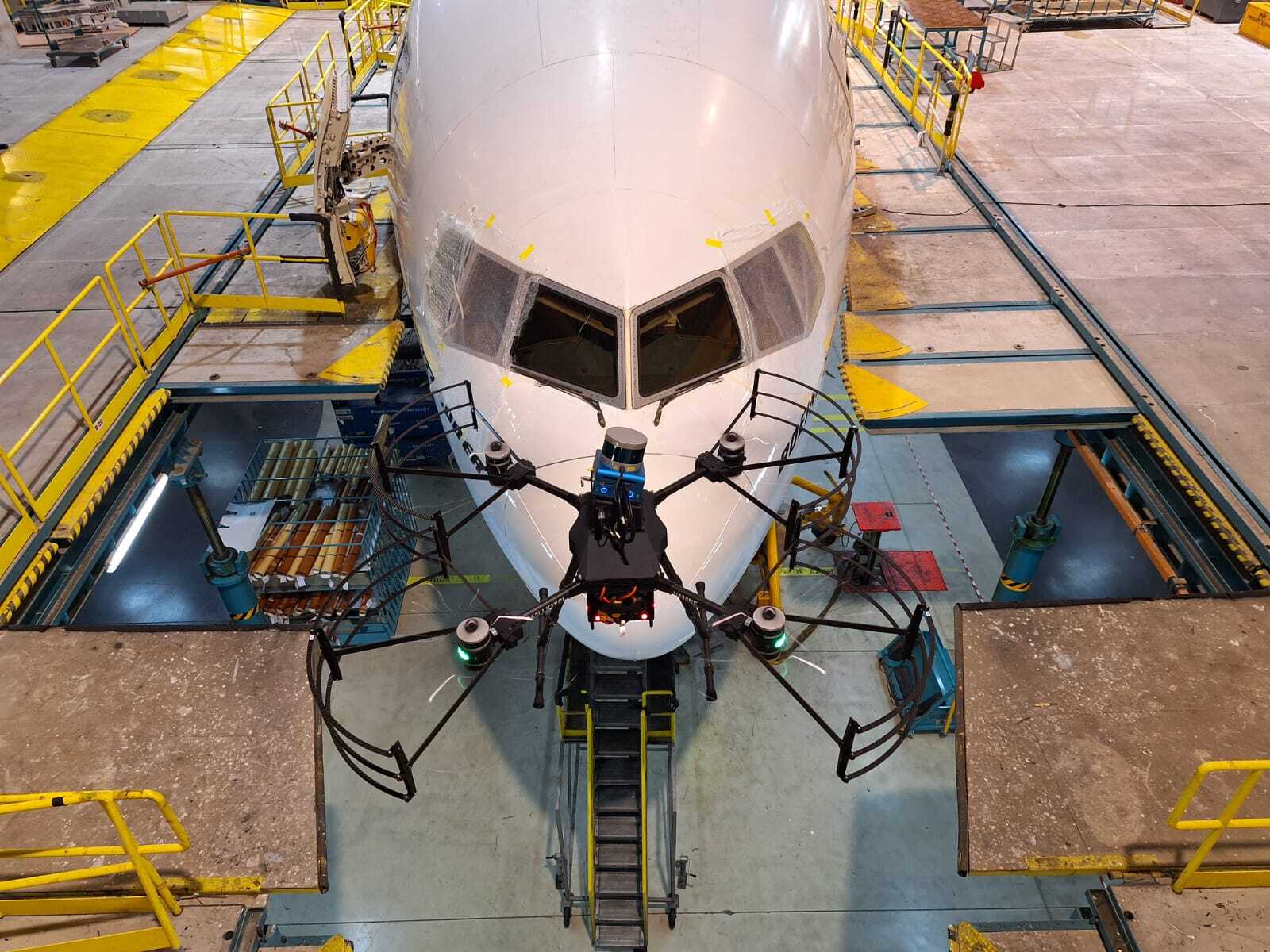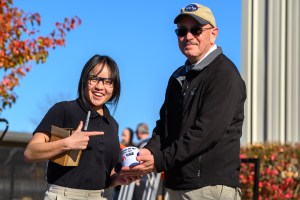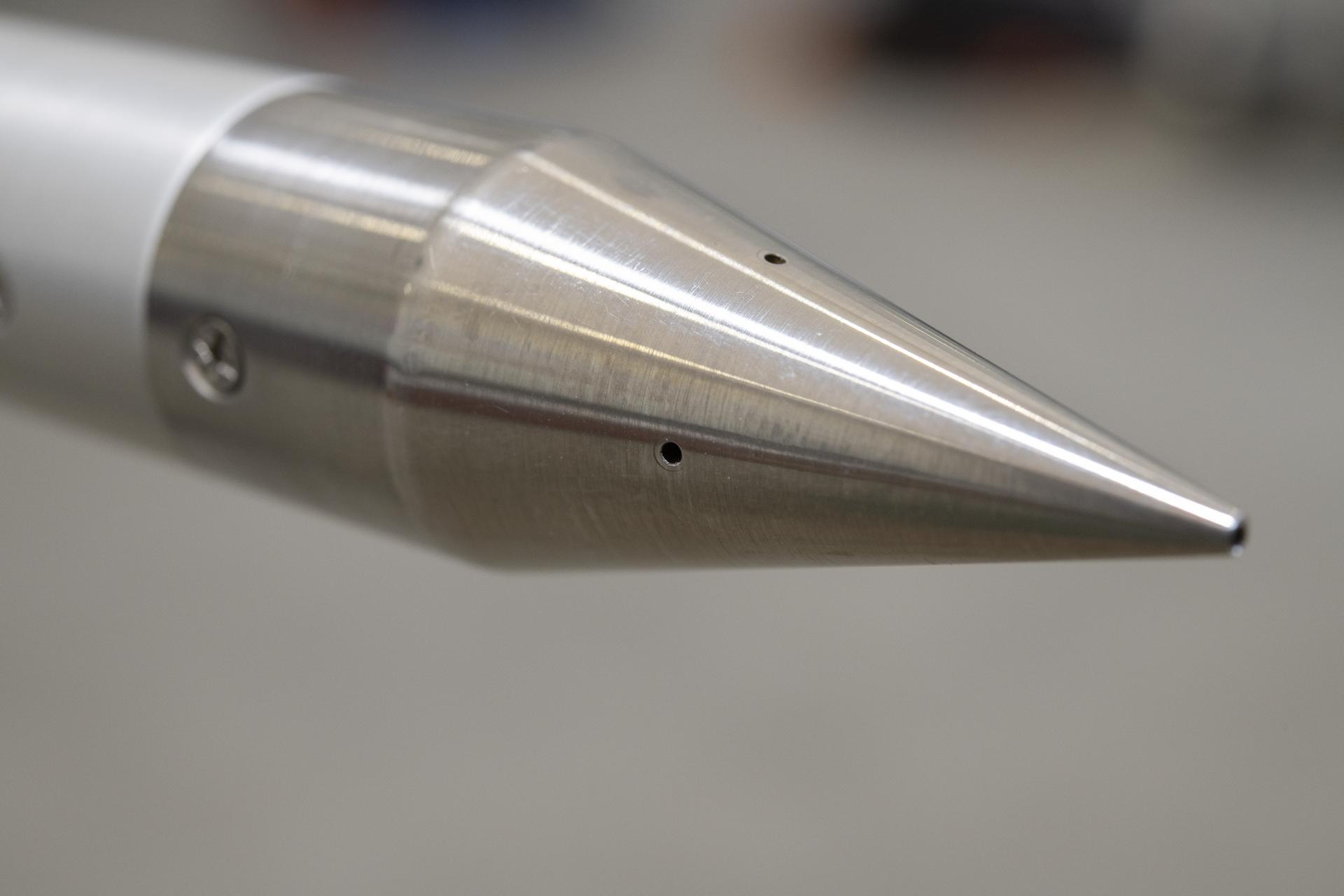3 min read Preparations for Next Moonwalk Simulations Underway (and Underwater) The G-IV aircraft flies overhead in the Mojave Desert near NASA’s Armstrong Flight Research Center in Edwards, California. Baseline flights like this one occurred in June 2024, and future flights in service of science research will benefit from the installment of the Soxnav navigational system, developed in collaboration with NASA’s Jet Propulsion Laboratory in Southern California and the Bay Area Environmental Research Institute in California’s Silicon Valley. This navigational system provides precise, economical aircraft guidance for a variety of…
Read MoreTag: Armstrong Flight Research Center
Wind Over Its Wing: NASA’s X-66 Model Tests Airflow
2 min read Preparations for Next Moonwalk Simulations Underway (and Underwater) NASA’s Sustainable Flight Demonstrator project concluded wind tunnel testing in the fall of 2024. Tests on a Boeing-built X-66 model were completed at NASA’s Ames Research Center in California’s Silicon Valley in its 11-Foot Transonic Unitary Plan Facility. The model underwent tests representing expected flight conditions to obtain engineering information to influence design of the wing and provide data for flight simulators. NASA/Brandon Torres Navarrete NASA’s Sustainable Flight Demonstrator (SFD) project recently concluded wind tunnel tests of its X-66…
Read MoreNASA Tests in Simulated Lunar Gravity to Prep Payloads for Moon
3 min read Preparations for Next Moonwalk Simulations Underway (and Underwater) Launch of Blue Origin’s New Shepard suborbital rocket system on Feb. 4, 2025. During the flight test, the capsule at the top detached from the booster and spun at approximately 11 rpm to simulate lunar gravity for the NASA-supported payloads inside. Blue Origin The old saying — “Practice makes perfect!” — applies to the Moon too. On Tuesday, NASA gave 17 technologies, instruments, and experiments the chance to practice being on the Moon… without actually going there. Instead, it…
Read MoreNASA Radar Imagery Reveals Details About Los Angeles-Area Landslides
NASA’s UAVSAR airborne radar instrument captured data in fall 2024 showing the motion of landslides on the Palos Verdes Peninsula following record-breaking rainfall in Southern California in 2023 and another heavy-precipitation winter in 2024. Darker red indicates faster motion. NASA Earth Observatory Analysis of data from NASA radar aboard an airplane shows that the decades-old active landslide area on the Palos Verdes Peninsula has expanded. Researchers at NASA’s Jet Propulsion Laboratory in Southern California used data from an airborne radar to measure the movement of the slow-moving landslides on the…
Read MoreNASA Tests Air Traffic Surveillance Technology Using Its Pilatus PC-12 Aircraft
3 min read Preparations for Next Moonwalk Simulations Underway (and Underwater) Equipped with state-of-the-art technology to test and evaluate communication, navigation, and surveillance systems NASA’s Pilatus PC-12 performs touch-and-go maneuvers over a runway at NASA’s Armstrong Flight Research Center in Edwards, California on Sept. 23, 2024. Researchers will use the data to understand Automatic Dependent Surveillance-Broadcast (ADS-B) signal loss scenarios for air taxi flights in urban areas. To prepare for ADS-B test flights pilots and crew from NASA Armstrong and NASA’s Glenn Research Center in Cleveland, ran a series of…
Read MoreHelicopter Removes Artifact from NASA Armstrong Rooftop
3 min read Preparations for Next Moonwalk Simulations Underway (and Underwater) NASA/Lori Losey What do the X-15 and the space shuttles have in common? Information from the rocket plane and the spacecraft, as well as many experimental aircraft, were tracked from a pedestal and telemetry dish during key eras in flight history at or near NASA’s Armstrong Flight Research Center in Edwards, California. When the NASA facility’s administration Building 4800 was built in the 1950s, the infrastructure was included to anchor the rooftop pedestal and dish as the primary way…
Read MoreNASA Small Business Funding Enables Aircraft Inspection by Drone
3 min read Preparations for Next Moonwalk Simulations Underway (and Underwater) A Boeing 777-300ER aircraft is being inspected by one of Near Earth Autonomy’s drones Feb. 2, 2024, at an Emirates Airlines facility in Dubai, United Arab Emirates. Near Earth Autonomy A small business called Near Earth Autonomy developed a time-saving solution using drones for pre-flight checks of commercial airliners through a NASA Small Business Innovation Research (SBIR) program and a partnership with The Boeing Company. Before commercial airliners are deemed safe to fly before each trip, a pre-flight inspection…
Read More2024: NASA Armstrong Prepares for Future Innovative Research Efforts
4 min read Preparations for Next Moonwalk Simulations Underway (and Underwater) NASA/Quincy Eggert NASA’s Armstrong Flight Research Center in Edwards, California, is preparing today for tomorrow’s mission. Supersonic flight, next generation aircraft, advanced air mobility, climate changes, human exploration of space, and the next innovation are just some of the topics our researchers, engineers, and mission support teams focused on in 2024. NASA Armstrong began 2024 with the public debut of the X-59 quiet supersonic research aircraft. Through the unique design of the X-59, NASA aims to reduce the sonic…
Read MoreAtmospheric Probe Takes Flight
NASA/Steve Freeman On Oct. 22, 2024, the latest iteration of an atmospheric probe developed by researchers at NASA’s Armstrong Flight Research Center in Edwards, California, successfully completed a test flight. Building on NASA 1960s research on lifting body aircraft, which use the aircraft’s shape for lift instead of wings, the concept could offer future scientists a potentially better and more economical way to collect data on other planets. Testing demonstrated the shape of the probe works. The atmospheric probe flew after release from a quad-rotor remotely piloted aircraft above Rogers Dry…
Read MoreLa NASA probará tecnología para medir las singulares ondas de choque del X-59
4 min read Preparations for Next Moonwalk Simulations Underway (and Underwater) Un detalle de la sonda de detección de impactos de la NASA resalta sus puertos de presión, diseñados para medir los cambios de presión del aire durante el vuelo supersónico. La sonda se montará en el F-15B de la NASA para realizar vuelos de calibración, validando su capacidad de medir las ondas de choque generadas por el X-59 para la misión Quesst de la NASA. NASA/Lauren Hughes Un F-15B de la NASA realiza un vuelo de calibración de una…
Read More